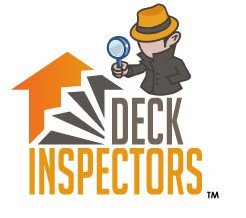Common Problems Uncovered & How to Address Them
When it comes to apartment safety, appearances can be deceiving. Many elevated structures may look sturdy but conceal hidden hazards beneath the surface. That’s why SB 721 inspections are essential—not just for code compliance, but for resident safety and long-term structural integrity.
Based on hundreds of inspections across Southern California, here are the top five issues we regularly uncover during SB 721 inspections—along with expert insight on how to prevent them.
1. Hidden Water Intrusion and Dry Rot
Most Common Finding: Moisture damage hidden beneath balcony flooring or stucco cladding.
Why It Matters: Water intrusion leads to dry rot in wooden supports, which weakens the entire structure over time.
Case Example: In a 10-unit apartment complex in Riverside, our team discovered severe wood decay behind an otherwise intact-looking balcony railing. Early detection prevented a full structural collapse.
Pro Tip: Regular waterproofing maintenance and sealing are crucial in coastal and high-humidity regions.
2. Rusted or Corroded Metal Connections
Most Common Finding: Rust on metal connectors, nails, or fasteners supporting the balcony structure.
Why It Matters: Corroded connections lose their grip strength, increasing the risk of collapse.
Case Example: During an inspection in Van Nuys, rusted metal brackets holding stairway stringers were found to be at 50% of their structural capacity—prompting immediate emergency repairs.
Pro Tip: Select corrosion-resistant materials and conduct regular visual inspections for signs of rust stains or flaking paint.
3. Loose or Wobbly Railings
Most Common Finding: Railings that move under pressure or have improper anchoring.
Why It Matters: Wobbly or weak railings are a serious fall hazard, especially for children and the elderly.
Case Example: In Long Beach, a third-story balcony with a loose railing failed the SB 721 inspection, resulting in a building-wide railing retrofit.
Pro Tip: All balcony railings should be securely anchored and meet current height and spacing codes.
4. Inadequate Flashing or Improper Waterproofing
Most Common Finding: Flashing systems that fail to direct water away from vulnerable areas.
Why It Matters: Poor flashing allows water to seep into structural framing, often leading to mold, rot, or both.
Case Example: A poorly flashed cantilevered balcony in Glendale had significant subfloor rot that cost over $30,000 to repair.
Pro Tip: Ensure professional-grade flashing is installed wherever vertical and horizontal surfaces meet.
5. Load-Bearing Overload or Structural Overstress
Most Common Finding: Balconies used for storage or with overloaded furniture setups.
Why It Matters: Exceeding the designed weight capacity can stress framing and connections beyond safe limits.
Case Example: In Anaheim, an upper-level deck used to store construction materials was deemed structurally unsafe until reinforced.
Pro Tip: Educate tenants about safe balcony use and limit heavy storage.
Why Proactive SB 721 Inspections Matter
These findings are just a sample of the risks lurking behind California’s aging exterior elevated elements. SB 721 inspections are more than a legal checkbox—they’re an opportunity to uncover hidden dangers before they become costly disasters.
Our licensed inspection team is here to help you comply with SB 721 and maintain a safe property. Contact us today to schedule an inspection or get expert guidance on preventative maintenance and repair planning.
Peace of mind starts with knowledge—book your SB 721 inspection now.
Deck Inspectors for Southern California is happy to offer our services in Los Angeles County, Riverside County, Orange County as well as San Diego County and all Southern California surrounding areas like: Los Angeles, Irvine, Long Beach, La Jolla, Glendale, Pasadena, Santa Ana, Huntington Beach, Dana Point, Burbank, Santa Monica, Anaheim, Temecula, Encinitas, Chula Vista, Vista, Mesa, San Diego, Oceanside, Escondido, Carlsbad, Poway, Mission Viejo, and El Cajon.



